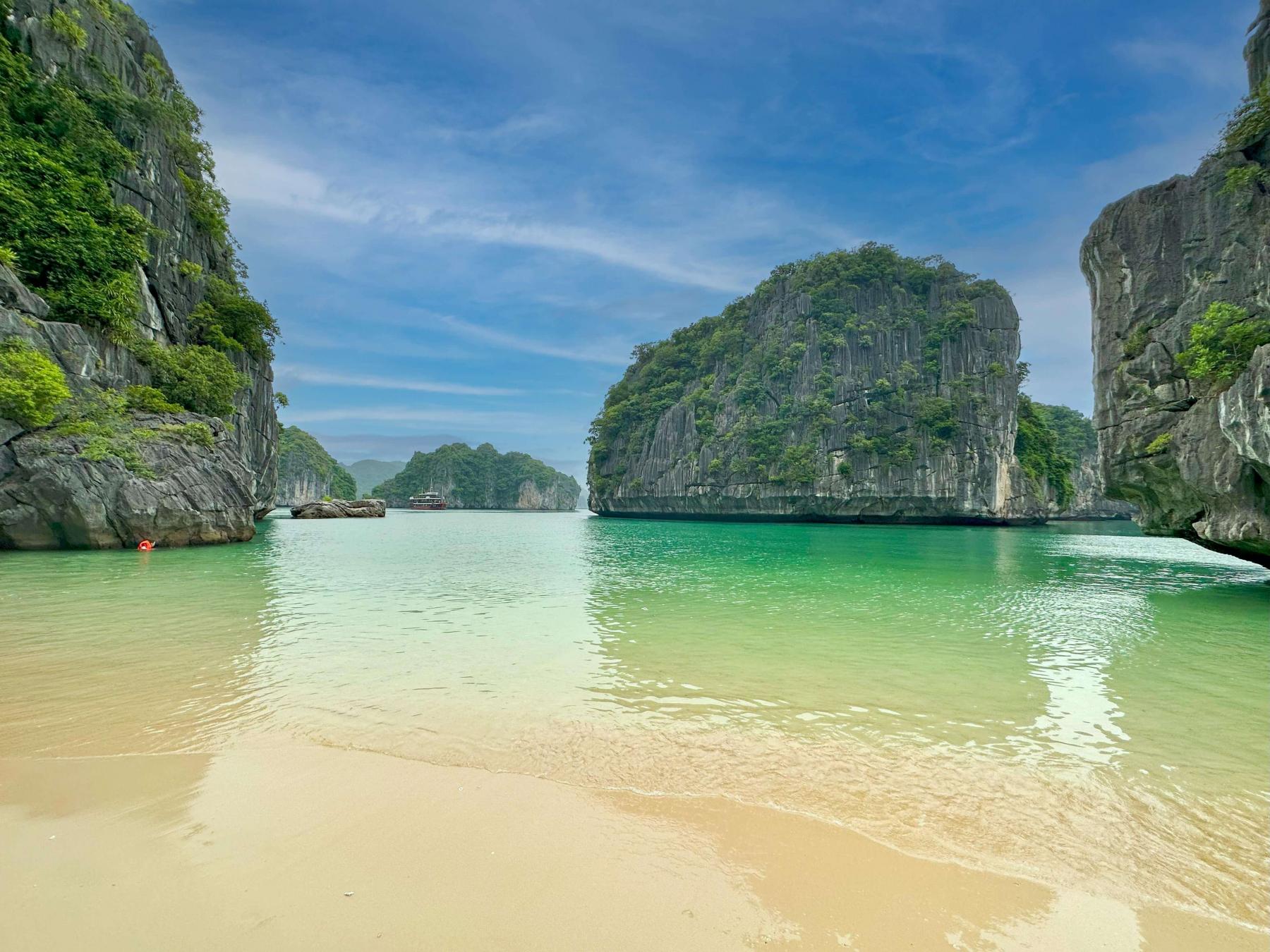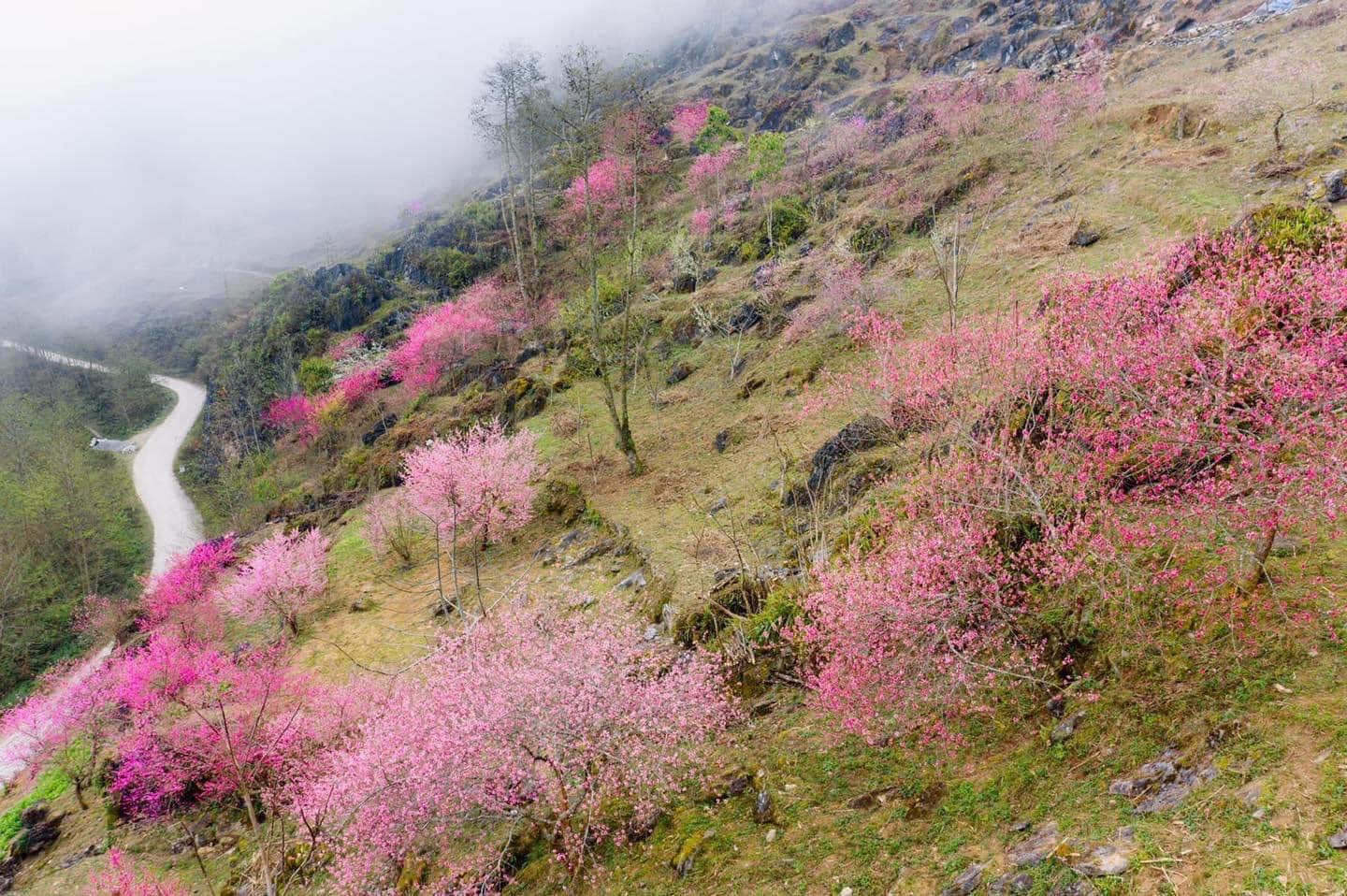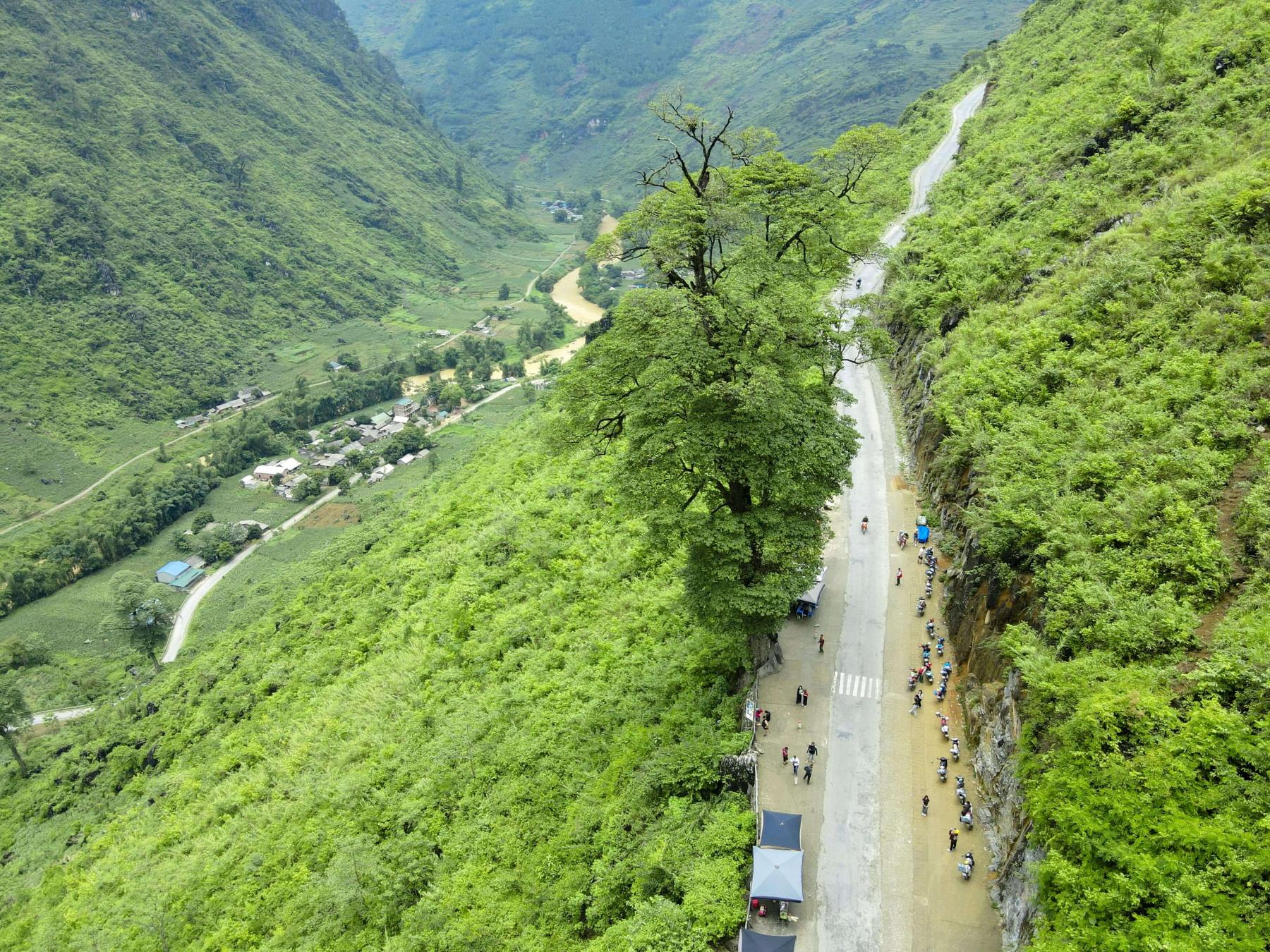Lan Ha Bay or Ha Long Bay: A Comparative Journey
Situated in the northwest of Vietnam, Lan Ha Bay has recently garnered considerable attention from tourists. Sharing geographical similarities with Ha Long Bay, Lan Ha Bay boasts picturesque landscapes, golden sunshine, and white sandy beaches. Despite its allure, the number of tourists visiting Lan Ha Bay is still relatively low compared to the bustling Ha Long Bay, which consistently tops the list of the most visited destinations in the country. Recently, many travel enthusiasts and renowned bloggers have suggested that Lan Ha Bay is worth exploring. Choosing between Lan Ha Bay and Ha Long Bay can be challenging, but Heritage Cruises will help you gain a deeper understanding of these two stunning bays! 
Geographical Features
Ha Long Bay:
Nestled in the northeast of Vietnam, in Quang Ninh province, Ha Long Bay is an extension of the North Bay region, covering an area of 1,553 km2 with approximately 1,969 islands, 989 of which are named individually. The landscape is primarily characterized by two main types of geological formations: shale and limestone, with an average age ranging from 250 to 280 million years.
Comprising various terrains such as limestone islands, caves, and diverse natural scenery, Ha Long Bay has earned recognition as a UNESCO World Heritage Site. Presently, about 775 islands, covering over 434 km2, are strictly protected to preserve the pristine beauty of the bay. 
Lan Ha Bay:
Located to the east of Cat Ba Island (Hai Phong), south of Ha Long Bay, Lan Ha Bay is formed by nearly 400 limestone islands of various sizes. Renowned for its numerous uniquely shaped mountains, such as Hon Quoc, Monkey Island, and Three Peaches Island with three fairy peach-shaped peaks, Lan Ha Bay offers captivating and untouched natural landscapes. With over 139 beaches spanning more than 7,000 hectares, including 4,500 hectares managed by the Cat Ba Biosphere Reserve, recognized by UNESCO, Lan Ha Bay is a haven for nature lovers.
While both Lan Ha Bay and Ha Long Bay share similarities in terms of geography and natural beauty, each bay has its unique features and charm.
(3).jpg)
Transportation to Lan Ha Bay and Ha Long Bay
To Ha Long Bay:
By Road:
Traveling from Hanoi to Ha Long Bay takes approximately 170 km, and the journey has become more convenient with the new 5B expressway, reducing travel time to around 1.5 hours.
By intercity bus from Hanoi Old Quarter or My Dinh bus station to Bai Chay bus station (Ha Long), with ticket prices ranging from 100,000 to 250,000 VND per person one way. .jpg)
Bus Hanoi to Ha Long - Book your tickets
Shuttle buses are available, picking up passengers around the Old Quarter to transport them to Ha Long Bay for approximately 10-20 dollars per person.
Private car hire takes about 1.5 hours to reach Ha Long Bay, offering more convenience, especially for family trips with young children.
By Air:
Taking a seaplane from Noi Bai International Airport to Tuan Chau Harbor takes about 45 minutes, providing a panoramic view of Ha Long Bay. Hai Au Aviation is currently the only provider of this service, with prices around 9,300,000 VND per person one way.
From other cities like Ho Chi Minh City, Da Nang, or Buon Ma Thuot, travelers can take flights to Van Don International Airport (Quang Ninh).
To Lan Ha Bay: By Road:The main route from Hanoi to Lan Ha Bay is through Hanoi – Hai Phong (by road) – Cat Ba Island (by ferry or high-speed boat) – Lan Ha Bay. .jpg)
Bus Hanoi to Cat Ba - Book your tickets
Shuttle buses to Dinh Vu Port are available, picking up passengers around the Old Quarter for approximately 300,000 VND per person one way. From there, take a high-speed boat to Cai Vieng Port (Cat Ba Island) in 30 minutes.
Private car hire is also an option, providing flexibility, especially for family trips. Travel to Got Ferry Terminal (Hai Phong), then continue to Cai Vieng Port (Cat Ba) and reach Lan Ha Bay.
By Air:
Cat Bi International Airport in Hai Phong is the closest airport. The route includes Cat Bi Airport – Binh Ferry Terminal (by road, 35 minutes) – Cai Vieng Port (by high-speed boat, 10 minutes) – Cat Ba Town (by bus, 40 minutes) – Lan Ha Bay.
From other cities, flights can be taken to Cat Bi International Airport, followed by the aforementioned route.
Key Differences between Lan Ha Bay and Ha Long Bay
Beaches:
Both Lan Ha Bay and Ha Long Bay feature stunning beaches, often topping must-visit lists. Notably, the choice between the two often hinges on the quality of beaches.
Ha Long Bay:
Ha Long Bay offers numerous beautiful beaches, with popular ones like Ti Top Beach, Tuan Chau Beach, and Bai Chay Beach attracting a significant number of visitors annually. Ti Top Beach, with its crescent moon-shaped landscape embracing the island, is particularly crowded during peak seasons. Soi Sim Beach provides a mystical and serene atmosphere, maintaining its original charm. 
Lan Ha Bay:
Lan Ha Bay, with around 139 scattered beaches, offers a more serene and pristine environment. Even the most visited beaches like Cat Co 1, 2, and 3, Van Boi Beach, and Tung Thu Beach retain their natural beauty with less impact from tourism. Noteworthy are the three beaches on Monkey Island, forming a unique setting. Tung Thu Beach, located on the southern side of Cat Ba Island, allows visitors to engage in activities such as swimming and coral reef snorkeling. Lan Ha Bay’s beaches, with fewer visitors, maintain their untouched beauty compared to the more frequented Ha Long Bay.
Caves:
The fame of caves in Ha Long Bay is often associated with their unique and intriguing formations. While Ha Long Bay boasts a higher quantity of caves, the comparison considers their uniqueness, historical significance, and natural beauty.
Ha Long Bay:
Ha Long Bay is renowned for its caves, with some of the most popular ones being Sung Sot Cave (Surprise Cave), Thien Cung Cave (Heaven Palace Cave), and Dau Go Cave. Each cave has its distinctive features, attracting tourists and researchers alike. Surprise Cave, one of the largest and most magnificent caves, amazes visitors with its intricate stalactite and stalagmite formations. Thien Cung Cave, with its ancient legends and artistic structures, is often included in most tours. Dau Go Cave, with its impressive wooden stakes and sculptures, adds a historical touch to the journey.

Thien Cung Cave
Lan Ha Bay:
Lan Ha Bay, though having fewer caves, offers unique experiences. One notable cave is Dark and Light Cave (also known as Hang Sang Toi and Hang Sang Toi), which captures attention with its narrow entrance leading to a vast and mysterious interior. The cave features a hidden lagoon, creating a magical and tranquil ambiance. This cave, along with others like Van Gia Cave and Ham Rong Cave, provides an intimate exploration with fewer crowds.
Sang Toi Cave
Activities:
The activities available in both Lan Ha Bay and Ha Long Bay contribute significantly to the overall experience. The comparison considers the variety, accessibility, and uniqueness of activities. Ha Long Bay:
Ha Long Bay offers a wide range of activities, from traditional boat tours to adventurous water sports. Cruises are the primary mode of exploration, with options ranging from day trips to overnight stays on luxurious boats. Kayaking and swimming are popular activities, allowing visitors to get up close with the bay’s stunning scenery. Fishing villages, such as Cua Van and Vung Vieng, offer cultural experiences. Those seeking an adrenaline rush can partake in activities like rock climbing on Titov Island.
Lan Ha Bay, with its fewer tourists, offers a more tranquil atmosphere for various activities. Cruises in Lan Ha Bay often include visits to floating fishing villages, providing an authentic glimpse into local life. Kayaking is a popular activity, allowing visitors to explore hidden corners and secluded beaches. Rock climbing on Monkey Island, renowned for its panoramic views, is a unique adventure. The calm waters of Lan Ha Bay also make it an ideal location for stand-up paddleboarding, especially around the isolated islets. (2).jpg)
Crowds and Tourism Impact:
The level of tourism impact and the density of crowds significantly influence the overall experience in both Lan Ha Bay and Ha Long Bay.
Ha Long Bay:
As one of the most popular tourist destinations in Vietnam, Ha Long Bay can experience high levels of crowds, particularly during peak seasons. The iconic attractions, such as Ti Top Beach and Sung Sot Cave, often attract large numbers of visitors, leading to a more bustling environment. Cruise boats, while offering breathtaking views, may have a higher number of tourists on board. The well-established tourism infrastructure in Ha Long Bay contributes to its popularity but can result in a more commercialized atmosphere.
Lan Ha Bay:
Lan Ha Bay, in contrast, is less frequented by tourists, providing a more peaceful and private experience. The beaches and attractions, even the popular ones, are generally less crowded, allowing visitors to enjoy the natural beauty without the hustle and bustle. The less-developed tourism infrastructure contributes to a more pristine environment, with fewer impacts on the local ecosystems.
In summary, the choice between Lan Ha Bay and Ha Long Bay depends on your preferences. Ha Long Bay offers a bustling atmosphere, iconic attractions, and a wide range of activities, while Lan Ha Bay provides a more tranquil, less-crowded experience with pristine landscapes. Whether you seek vibrancy or serenity, both bays offer unique beauty and memorable experiences. Heritage Cruises is here to assist you in exploring these remarkable destinations.




















